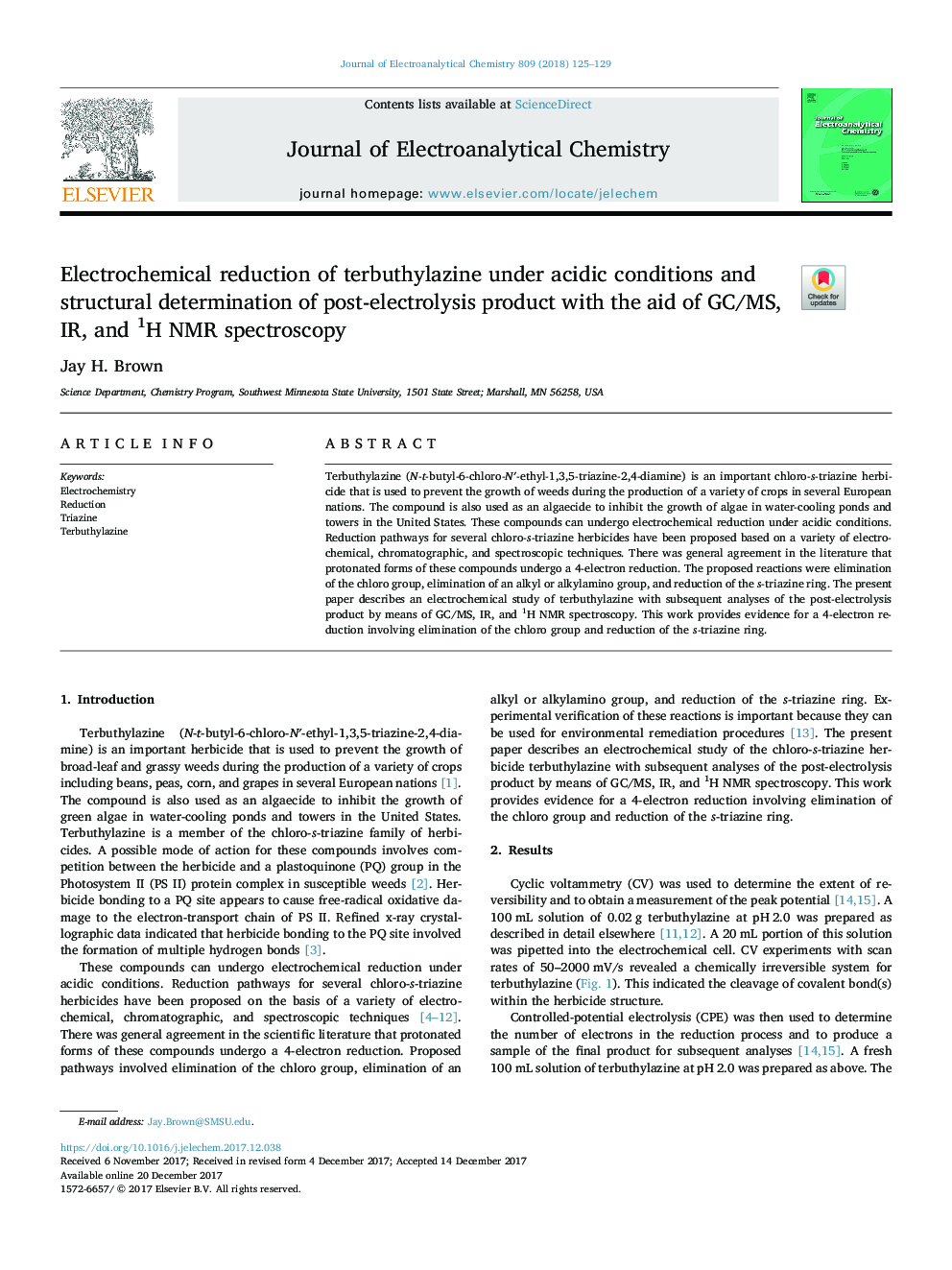| Article ID | Journal | Published Year | Pages | File Type |
|---|---|---|---|---|
| 6662193 | Journal of Electroanalytical Chemistry | 2018 | 5 Pages |
Abstract
Terbuthylazine (N-t-butyl-6-chloro-Nâ²-ethyl-1,3,5-triazine-2,4-diamine) is an important chloro-s-triazine herbicide that is used to prevent the growth of weeds during the production of a variety of crops in several European nations. The compound is also used as an algaecide to inhibit the growth of algae in water-cooling ponds and towers in the United States. These compounds can undergo electrochemical reduction under acidic conditions. Reduction pathways for several chloro-s-triazine herbicides have been proposed based on a variety of electrochemical, chromatographic, and spectroscopic techniques. There was general agreement in the literature that protonated forms of these compounds undergo a 4-electron reduction. The proposed reactions were elimination of the chloro group, elimination of an alkyl or alkylamino group, and reduction of the s-triazine ring. The present paper describes an electrochemical study of terbuthylazine with subsequent analyses of the post-electrolysis product by means of GC/MS, IR, and 1H NMR spectroscopy. This work provides evidence for a 4-electron reduction involving elimination of the chloro group and reduction of the s-triazine ring.
Related Topics
Physical Sciences and Engineering
Chemical Engineering
Chemical Engineering (General)
Authors
Jay H. Brown,
